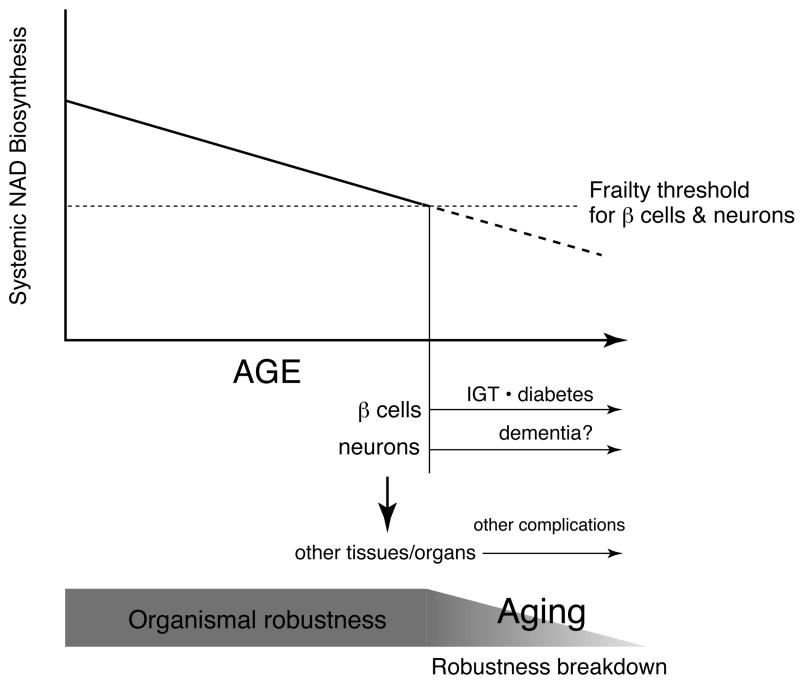Figure 5.
A model of mammalian aging as the process of robustness breakdown triggered by a decline in systemic NAD biosynthesis. Pancreatic β cells and neurons are likely the most critical frailty points in the NAD World due to their very low levels of iNampt and systemic impacts on many other tissues/organs. When systemic NAD biosynthesis levels decline and reach frailty thresholds for pancreatic β cells and neurons, these two cell types start having functional problems, which eventually spread to other peripheral tissues/organs through insulin secretion and central metabolic regulation. This cascade of robustness breakdown might be the central process of aging that causes a variety of age-associated diseases, including impaired glucose tolerance (IGT), type 2 diabetes, dementia, and many others. See texts for details.

